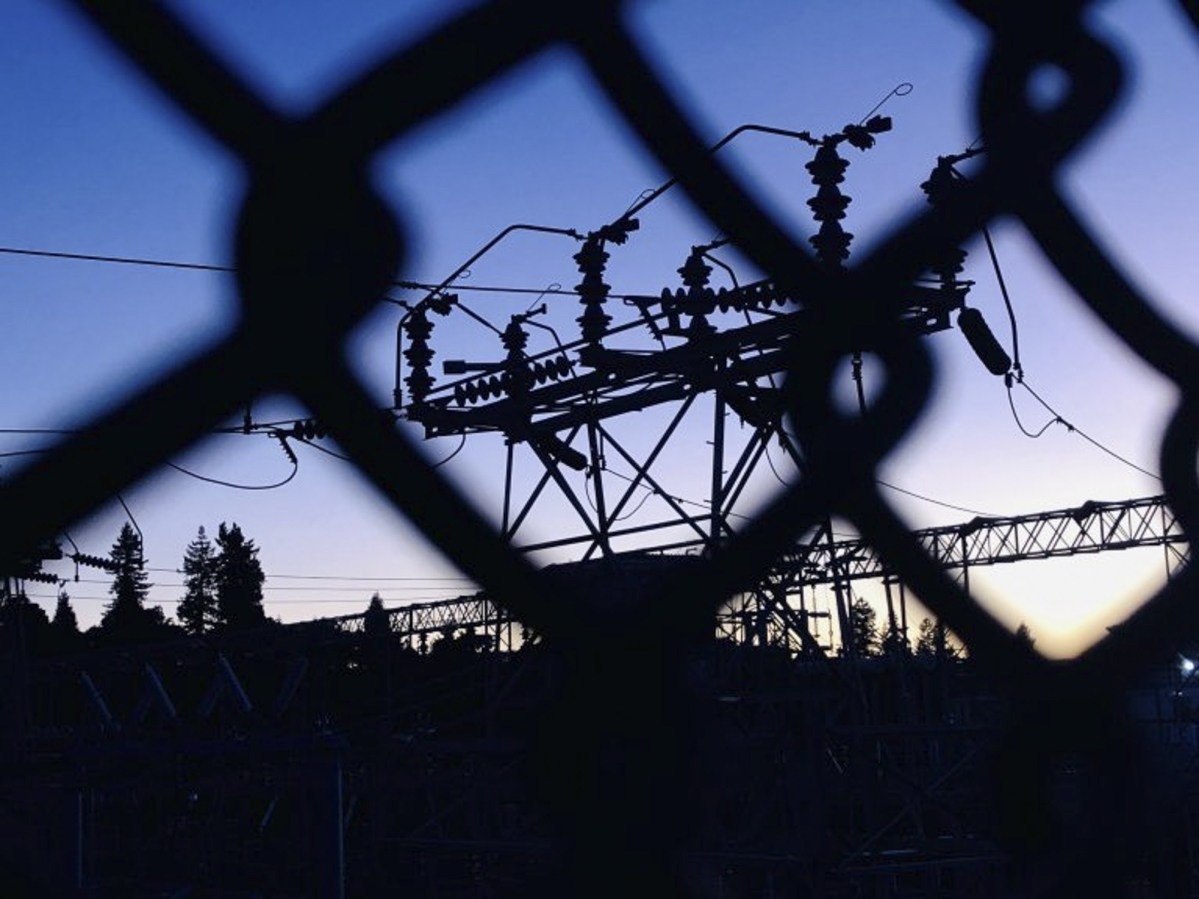When power is transferred—literally—in an election

PG&E’s Oakland K substation is silhouetted at sunset in the hills of
Oakland, Calif., on Wednesday, October 9, 2019. PG&E was supposed to
shut off power at noon in the Oakland hills, but at 8:45 PM it was
still on. (Jane Tyska/Bay Area News Group)
OCTOBER 27, 2020
In a stark scene of what the electoral process in California can look like in 2020, masked voters last Monday cast early ballots in an El Dorado County elections office powered by a generator after dry winds and fear of wildfires triggered an electricity shutoff.

This year, thanks to back-up generators and the promise of advance notice, state and county officials and utilities are better prepared than in the past for power cuts to protect Californians from wildfires. And such outages aren’t uncommon: So far this year, PG&E has cut power five times to hundreds of thousands of Californians, and there may well be more shutoffs as Election Day nears.
Eerie as the scene was in El Dorado, it was a marked improvement from a year ago, when an outage abruptly shut off power in Nevada County for a special election to fill an empty assembly seat. The assistant registrar, Natalie Adona, recalls getting one hour’s warning from the county’s executive office that PG&E was about to cut power to almost the entire county.
She still has a photograph taken that day: an election staffer sporting a headlamp, at work in the darkened ballot room.
Since then, top priority for counties like Nevada, El Dorado, Amador and Calaveras, which face high risks of fire and outages, has been ensuring a continuous supply of power to election headquarters where ballots are processed and counted.
County election officials who administered special elections in power shutoff zones in 2019 asked the Secretary of State to set up “some kind of liaison between us and PG&E,” to protect the 2020 general election from public safety outages, Adona said. The state contacted PG&E, Southern Edison and other main utilities. Now, Nevada County usually gets a couple days of advanced notice of shutoffs.
That’s workable, said Adona. It gives election officials time to warn the affected vote centers that they’re being switched over to generators.
Some of the counties can move faster than others. Nevada County’s headquarters took 10 to 20 minutes to switch over to generator power last weekend in preparation for the latest wave of outages, said Adona.
In El Dorado County, whose power system at its main Placerville office includes an automatic transfer switch to backup power, that transition will take about 30 seconds.
Whenever the power goes out, the main office immediately backs up data associated with its ballot tabulation and scanning systems as a matter of protocol, said Bill O’Neill, El Dorado’s registrar of voters. That data is stored at a different facility, which is also equipped with a backup generator and battery power.
If in a blue-moon scenario the main office’s backup generator failed to start during a shutoff, backup batteries lasting two-and-a-half hours would fuel tabulation and sorting systems. If those batteries were to run out, the elections office would borrow generators from the county sheriff, O’Neill says.
This summer, El Dorado’s election officials held a dress rehearsal in its Placerville office and attempted to run it entirely on generators. It failed. So the elections office ran the numbers for energy use and ordered six new 3,500-watt generators. Just one of those generators powered the vote center for six hours, O’Neill said.
When it comes to conveying vote counts to the Secretary of State, O’Neill said, county officials can resort to calling them in by phone if fax and other electronic communications are offline.
So far, PG&E has advised that shutoffs this weekend through November 3 are unlikely, O’Neill said.
Aaron Leathley is a reporter at UC Berkeley’s Graduate School of Journalism.


